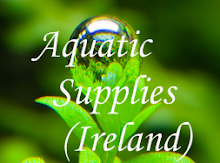All plants will benefit from c02 in any tank, be it low light or high light.
The one problem people tend to have is how to check how much c02 is in the tank. This can be done one of two ways.
1. The most common method of checking c02 is taking the pH/kH read and checking them against a c02 table, the aim is to have a reading within the green boxes. This method is fine and has been used for a great many years, but, this method has ONE MAJOR problem, it relies on the water column having “NO BUFFERS” in the water. If any buffers, ph up or pH down etc or even p04 are in the water then the reads will not give a true account of the total c02 in the water.
2. The more favoured and more accurate way of checking c02 is by using a drop checker and a 4dkh solution. This when placed in the tank will show by a blue, yellow or green color what the c02 levels are.
Blue = too little. Yellow = too much. Green = OK.
Green indicates a c02 level of 30ppm. There are other dkh solutions that can be used 3 & 5dkh which give higher or lower reads than 30ppm depending on the level you want but 30ppm is the more natural for a planted tank.
Directions:
1. Turn drop checker upside down and half fill the ball (approx 5-6 drops) of 4dkh solution
2. Add 1-2 drops of APIs low pH solution bromo blue) the amount of bromo blue will not affect the read only the deepness of the color.
3. Turn the drop checker the right way up, being careful not to spill the solution.
4. Place the drop checker in the tank so it is visible.
5. Approx 1hr after you place the drop checker in the tank you should see the color of the regent changed or starting to change. After 2hrs you should be able to read the color as is to get the correct level of c02 in the tank
Drop checkers & 4dkh solution can be found here:
aquaessentials
So how does this little glass ball work?
A drop checker is where the 4 deg° KH standard and a pH indicator, “bromo blue”(found in API low pH test kit) is placed in the ball of the drop checker. The shape of the drop checker ensures that there is a gap between the aquarium water and the indicator solution

When c02 is injected into the aquarium water above its normal level the c02 will escape (outgas) up into the drop checker where gases exchange will take place. When this happens the c02 gas will be absorbed by the indicator solution and lower the pH of the solution giving the colors described above.

When c02 is not injected into the water the opposite happens, this being any c02 in the solution will escape back into the water giving the colors described above.
| 
